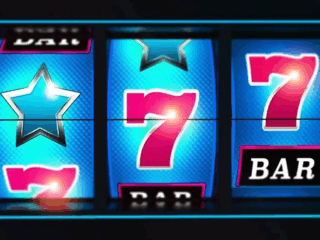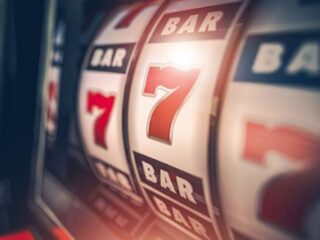Read our recap of the Hall of Fame vote to find out if Minnie made it in, how a couple other players are on the ballot this year and who might end up getting inducted.
The “minnie minoso team mlb the show 21” is a baseball player who was inducted into Cooperstown in 2006. He has been waiting for 21 years to be elected. The Baseball Hall of Fame vote will take place this weekend and it looks like Minnie’s time has finally come.
The baseball world has not fully shut down, despite how it may seem. While the spectacular rush of free-agent signings and trades that has occurred in recent days will come to an end due to the lockout, there is still a lot of baseball business to be done.
One of the most significant events will take place on Sunday, when the largest hole in the Baseball Hall of Fame’s membership may be filled: the removal of White Sox star Saturnino Orestes Armas (Arrieta) Minoso, better known as Minnie.
Minnie Minoso is one of 20 greats who will be considered for entry into the Hall of Fame at the Winter Meetings this weekend. Yes, the winter meetings will go place even if Major League Baseball is not there. The minor league part of the meetings will go on as planned, as will those designated to analyze the Hall’s two era-committee votes.
The following are the ballots:
• Bill Dahlen, John Donaldson, Bud Fowler, Vic Harris, Grant “Home Run” Johnson, Lefty O’Doul, Buck O’Neil, Dick “Cannonball” Redding, Allie Reynolds, and George “Tubby” Scales will be considered by the Early Baseball committee (from the beginning of time until 1950).
• Dick Allen, Ken Boyer, Gil Hodges, Jim Kaat, Roger Maris, Minoso, Danny Murtaugh, Tony Oliva, Billy Pierce, and Maury Wills will be considered by the Golden Days committee (from 1950 to 1969).
This is a major weekend for the Hall, which is hopeful that 2022 will offer the whole Hall of Fame induction experience, which includes the annual Parade of Legends, the induction ceremony, and the thousands of fans that go to Cooperstown, New York, each July. Following the cancellation of the festivities in 2020 due to the pandemic, a scaled-down version was held in September 2021, with Derek Jeter, Larry Walker, Ted Simmons, and the late Marvin Miller inducted without parades and with smaller crowds than would have otherwise flocked to upstate New York, particularly for Jeter.
The fact is, when there are genuine inductees, Induction Weekend is a lot more fun — and a lot greater attraction. And there’s no certainty that any new Hall of Famers will emerge from this year’s BBWAA vote.
Unfortunately, Kaat, Oliva, and Wills are the only prospects still alive from this group of 20, so getting one or all of them in would be fantastic. We’ll get to it later, but for now, let’s concentrate on Minoso, the most glaring exclusion in the Hall’s plaque chamber, at least among those who aren’t still on the BBWAA ballot.
Minoso died on March 1, 2015, at the age of 89 to 92 years old — we’ll never know for sure — only months after a Golden Era committee refused him for the second time. He earned nine votes in 2011 and eight votes in 2014. He needed 12 votes both times.
Since his death, the White Sox and Minoso’s family have both continued to promote his candidacy, with efforts intensifying in recent weeks. Minoso’s birthday (Nov. 29) was commemorated with a ceremony at Guaranteed Rate Field, where home plate at the old Comiskey Park is marked, with Minoso’s widow, Sharon, and son, Charlie, in attendance.
In other words, although Minoso will not be there for his induction, if it occurs, there will be plenty of celebrations starting Sunday night if he is chosen.
2 Related
When you read about Minoso’s case, you’ll almost always learn a lot about his professional background, which is important. And there’s always a lot of whining about his comeback appearances with the Bill Veeck-owned White Sox in 1976 and 1980 (meaning he appeared in MLB games in five different decades) and subsequently for the independent league St. Paul Saints, owned by Veeck’s son Mike, in the 1990s and 2000s.
The White Sox appearances had the unpleasant side effect that, although Minoso’s major league career finished in 1964, his tenure on the BBWAA vote began in 1986, a full generation later. As a result, his stunts became a greater part of his legacy than his acting career for a while.
Whether or not they watched him play, voters should have known better — even before the internet, there were means to learn this things — but the antics may have been a factor in keeping him out. White Sox owner Jerry Reinsdorf felt that Minoso’s delayed candidacy harmed him when he missed in 2014, telling the Chicago Tribune, “People who have never seen him play are now considering him. I believe that returning harmed his prospects.”
Well, enough time has gone that there aren’t many people alive who remember the antics personally, and because to the growth of digital data and baseball statistics since then, we now have a better understanding of the achievements of players like Minoso than ever before. It’s now time to recognize such achievements.
Let’s ignore the backdrop of Minoso’s career, whatever he performed outside of the major leagues, and even the recent inclusion of Negro League numbers to baseball’s official numerical canon for the time being. The greatest argument for Minoso’s induction to the Hall of Fame, in my opinion, is that he was a Hall of Famer player on his own merits. There is no more to say.
A sort of player who had a lot of his worth tied up in his ability to draw bases on balls was disregarded in the pre-sabermetric ages of baseball. This isn’t precisely how Minoso describes himself, but bear with me. Bill James has written on this before, but for the longest time, people didn’t regard the ability to draw walks as part of the batter’s skill set, but rather as a pitcher’s flaw.
Official records often excluded walks (remember the once-ubiquitous “Who’s Who in Baseball” annuals?) and there was no such thing as an on-base percentage. As a result, an important aspect of a hitter’s talent was missed.
Consider the following: According to baseball-reference.com, there were 271 major league batters with at least 1,000 plate appearances in the 1950s. Only ten of the players had on-base percentages of.400 or above. Minoso was one of them, and it wasn’t only because he walked a lot. In the days when batters wore body armor at the plate, he stood right on top of the plate and led the American League in hit by pitches in 10 of 11 seasons between 1951 and 1961.
Of course, this isn’t enough to get Minoso into the Hall. The point is that this was a big component of his game that most people didn’t notice while he was playing, and especially when his Hall nomination was being considered. It’s one of the reasons Ted Williams reportedly declared Minoso was the most likely of his peers to become baseball’s next.400 hitter.
Talking about walks and plunks isn’t even close to capturing Minoso’s abilities. Despite playing nearly 40% of his games in pitcher-friendly Comiskey Park, he hit for power, slugging.461 for his career. He was a whirlwind on the bases, leading the AL in triples and steals three times each, and was the driving force behind the White Sox’s moniker of “Go Go Sox” in the 1950s.
Although the inaugural Gold Gloves were not awarded until 1957, the by-then-aging Minoso won three of the first four years they were given out. According to Fangraphs, the only AL outfielders who saved more runs with the glove from 1951 through 1956, before the awards were created, were Jimmy Piersall and Al Kaline.
When you tally it all up, using contemporary methodology, and include Minoso’s finest seasons from 1951 through 1961, Mickey Mantle is the only position player in the AL with greater fWAR. During that time, Mantle had 85.1 points, considerably ahead of second-place Minoso’s 52.3, but then it lowers to Yogi Berra in third place at 49.2, followed by Ted Williams at 49.1.
So, how can you not a Hall of Famer if the only player in a league better than you during an 11-year span is Mickey Mantle?
The committee for early baseball (before to 1950):
Dahlen, Bill Donaldson, John Bud Fowler is a professional baseball player. Johnson, Vic Harris Grant “Home Run” Lefty Buck O’Doul Redding, O’Neil Dick “Cannonball” Reynolds, Allie Scales, George “Tubby”
The Golden Days Committee (1950-1969) consisted of the following members:
Allen, Dick Ken Boyer is a writer who lives in the United States Gil Hodges is a writer who lives in the United States. Jim Kaat is a writer who lives in the United States Roger Maris is a baseball player from the United States. Minnie Minoso is a character in the film Minnie Minoso Murtaugh, Danny Tony Oliva is a character in the film Tony Oliva Pierce, Billy Wills, Maury
When you hear popular discussions about “Hall of Fame stats,” they usually center on large career totals, which is good. If you win 300 games, have 3,000 hits, or hit 762 home runs, you should be eligible for the Hall of Fame. You’re also eligible if you’ve played in at least 10 seasons and haven’t been booted out of baseball.
This disparity in Hall eligibility has allowed players like Sandy Koufax, Dizzy Dean, Ralph Kiner, and Jackie Robinson to be inducted despite their brief careers. This is exactly as it should be. At the same time, I’ve never understood why guys like him — who resign before accumulating 15 or 20 years — are recognized, but players who are great for a decade and then terrible (think Dwight Gooden) are able to play themselves out of the Hall. Shouldn’t they have simply given up while they were still ahead? Would it have been preferable if they’d had a career-ending injury?
So, although I will always analyze the whole body of evidence for every player and honor those who put up amazing career stats over extended careers, I also feel that if you’re a Hall of Fame-level player for a decade, you’re a Hall of Fame player.
You may assume that this would result in a flood of new Hall of Famers who fit those requirements, but it doesn’t. A general analytic rule of thumb is that if you collect 50 WAR over a 10-year period, like Minoso did, you have a solid case. That opens the way for current non-Hall of Famers like as Gooden, Bobby Grich, Bobby Abreu, Graig Nettles, Keith Hernandez, and a few more, but it isn’t an avalanche, and each of those guys has their supporters.
Because we’re making an argument based on criteria that didn’t exist at the time (WAR), we’ll use a newly invented metric called Championship Probability Added. This method examines a player’s game-by-game performance in terms of how much he contributed to or detracted from his team’s chances of winning the World Series in a particular season. It’s one of my favorite advanced metrics for integrating narrative criteria into the empirical record, along with its statistical cousin, Win Probability Added.
Minoso never played in the postseason, but during his time with the White Sox, Chicago was one of the most consistent threats to the Mantle-Casey Stengel New York Yankees dynasty, along with Cleveland, where he played in 1958 and 1959 after being traded for Hall of Fame pitcher Early Wynn and outfielder Al Smith.
While Minoso did not win a pennant with either Chicago or Cleveland, he did amass the 30th-highest total of championship probability contributed of all time, or at least during the period in which the statistic can be measured, which goes back to 1916. Barry Bonds, Tommy Henrich, and Boog Powell are the only non-Hall of Famers who rank higher than Minoso.
That much empirical proof, in my opinion, would be enough to get Minoso into Cooperstown. But there’s a lot more to him than his track record, and here is where we start to understand what he accomplished.
Again, we don’t know how old Minoso was at the time of his death. Officially, the number was 89. At the time, the family claimed to have paperwork indicating he was 90 years old. Minoso himself states in an update to his memoirs that he was 27 years old when he first got into the majors with Cleveland in 1949, making him 92 years old.
If that final statistic is correct, Minoso would have been 28 years old when he was beaten out by the Yankees’ Gil McDougald for the AL Rookie of the Year award in 1951. So the whole Hall-of-Fame-worthy CV I just mentioned was put together after he’d already reached the pinnacle of his career.
Even if Minoso started his rookie season when he was 25 or 26, that’s still a late start for a guy who should have been ready for the majors by the age of 21 or 22. The official record now includes Negro League statistics, which has altered since his previous appearance on the period ballot. In both 1947 and 1948, he was an All-Star in the Negro League National League, hitting.351 in the games that have been recorded.
We know that the top players in the Negro Leagues were among the best players in the American and National Leagues once the game was eventually integrated, so it’s not a leap to conclude that Minoso was ready to be a regular in one of those circuits by 1947. Minoso debuted with Cleveland in 1949, but he only saw little action, and he spent the whole 1950 season in the high-level Pacific Coast League. Minoso put up enormous statistics with the proto-San Diego Padres during the 1949 and 1950 seasons, when he might have easily been a regular on a major league team.
In a different time and place, Minoso would have been piling up hits, walks, awards, and WAR with the Indians, White Sox, or someone else throughout each of those seasons. Minoso was a professional musician from the mid-1940s through the early 1970s. SABR researcher Scott Simkus discovered a few years ago that Minoso was one of a small group of players who had accumulated more than 4,000 hits as a professional, ending with 4,073.
We’ve got the latest on MLB’s first lockout since 1990, as well as where things stand with free agency (which is presently stalled). Complete coverage »
• MLB Lockout FAQ: Everything You Need to Know ›
• Tracking free-agents »
What caused Minoso to be so late to the game? We understand why. It was due to willful prejudice and ignorance, which were only gradually forced out of the game when Robinson joined the Brooklyn Dodgers in 1947, breaking the color line. When Minoso came in Chicago early in the 1951 season as the city’s first Black player for either club, it was still going strong. That was more than two years before Ernie Banks joined the Cubs as the team’s first African-American player.
If you only remember one truth about Minoso from all of this, make it this one: He was the first Latin American Black player to play in the American or National Leagues. This will have an incalculable influence on baseball. He is still adored in his home Cuba, where he labored in sugarcane fields as a young man. For decades, ambitious baseball players all around Latin America have looked up to him.
Minoso paved the way for a generation of players who have flourished despite discrimination towards Black and Latino athletes. An exhibit on Latin baseball that has been on display at the Hall of Fame for years is a harsh illustration of this. It includes an old cartoon from The Sporting News, the so-called “book of baseball,” mocking the way Minoso talked 11 years into his career.
Prior to Minoso’s Golden Era candidacy in 2011, I attended an event at Guaranteed Rate Field where his unique context punched me in the face, since it transformed the way I felt about what I thought I understood about Minoso’s position in baseball history.
Adrian Burgos, a Latin baseball scholar who has worked with the Hall of Fame for years on the issue, said something that made me sit up straight: “Minoso was the catalyst for baseball’s Latinization. Minoso was required to counterbalance the stereotype of the flamboyant Latin. Another Jackie Robinson was desperately needed. That was Minoso’s contribution to the game.”
When I read the prologue to Minoso’s book, written by Hall of Famer Orlando Cepeda, I realized the emotion preceded that day. He said, “Jackie Robinson is to Latin baseball players what Minnie Minoso is to Black baseball players. All of us Latins owe it to Minnie to make it feasible. He was the first Latino to achieve superstardom.”
I was moved by Minoso on that day in 2011, when the White Sox conducted the forum for him. Literally. When I felt a touch on my shoulder, I was sitting in my seat, ready for the event to begin. It was Minoso when I turned around. He was anxious because I had not eaten at the table put up on the floor with supplied food. He insisted on getting me something to eat and was confused that I hadn’t. It was simply how he was.
Minoso was hardly the first person I’d met. I’d seen him a couple times at and around Chicago ballparks and had a brief conversation with him. Almost everyone who was around baseball in Chicago throughout his lifetime can attest to this. Beyond all that Minoso did for baseball, maybe the most important position he performed was that of ambassador, promoting the sport not only in Chicago, but across the globe, all the way to the country’s boundaries and beyond. And despite the criticism, bigotry, and mocking he endured for so long on and off the field, all he did in public was grin.
Unfortunately, Minoso will not be able to offer us that grin on induction day in Cooperstown next summer. But it’s not too late to give him the recognition he deserves, which he should have had years ago.
We may then exhale and do Minnie Minoso the honor of smiling on his behalf, repaying the favor he did for so many while he was alive, if and when that occurs as a result of the debates taking place this weekend.
The remaining ballots
Lefty O’Doul (left) deserved to be inducted into the Hall of Fame with Joe DiMaggio (right with then-wife Marilyn Monroe), whom he coached. Contributor Bettmann
Look, I’m not one of those small-town Hall types. There isn’t a single name on the two period ballots that I wouldn’t be pleased to have added to the Hall of Fame’s holy list of persons memorialized. I am passionate about Minoso’s candidacy, and the fact that I have chosen to concentrate on him does not imply that I am overlooking other deserving candidates such as Oliva, Wills, Kaat, Maris, or Hodges.
Separately, the two ballots will be evaluated. To be enshrined, each nominee must get 12 of the available 16 votes. Allen and Oliva came up one vote short the first time around. Because each voter may vote for up to four candidates on their ballot, the issue quickly becomes one of reaching an agreement. It’s not a case of thumbs-up or thumbs-down.
With that in mind, and since I don’t want to dispute with anyone’s point of view, I’ll only identify the people on each ballot who I would vote for if I were a part of the process.
In addition to Minoso, I’d put Allen and Boyer on the Golden Era ballot. It’s the same 10-year criterion for both.
Boyer had 56.8 bWAR in his ten seasons with the Cardinals, earned an MVP award and five Gold Gloves, and helped St. Louis win the 1964 World Series. Only Scott Rolen (who I believe should be in and is still on the BBWAA ballot) and Nettles (who I’d also put in) are non-Hall of Fame third basemen under Jay Jaffe’s JAWS method.
During his finest 10-year era, Allen accumulated 54.5 bWAR. With one of the greatest rookie seasons ever, he also earned an MVP and the 1964 NL Rookie of the Year title. Despite the pitching-friendly period in which he played, he won two home run championships, had large on-base percentages, and led his leagues in OPS four times. To be sure, he was a complicated guy, but his stats over the course of a decade spoke for themselves.
I’d suggest four candidates for the Early Days committee: O’Neil, O’Doul, Donaldson, and Dahlen.
While O’Neil and O’Doul had quite different life trajectories, my argument for them is similar in that their total contributions to the game must be considered. This is permitted, despite the Hall’s requirement that an enshrinee be classed as a player, manager, executive, contributor, etc. at some point.
Like Minoso, most of you reading this will remember O’Neil as a valuable advocate of the game. He was also a superb player in the Negro Leagues, a renowned scout, and the first Black coach in a major league, leading the Cubs to victory. And gosh, the guy could tell a tale. He should have gotten in much sooner.
Over the course of his 11-year major league career, O’Doul hit.349, albeit some of that was undoubtedly due to certain hitter-friendly environments in which he thrived. Long before the majors moved west of St. Louis, he ruled the formidable Pacific Coast League. They played a crazy amount of games in the PCL, and in 1925, O’Doul hit.375 in 198 games, totaling an incredible 309 hits in a single season!
O’Doul was also the PCL’s most successful manager, a key figure in the game’s popularization in Japan, and a lifelong friend and mentor of Joe DiMaggio. On top of that, he maintained a fantastic restaurant/bar/quasi-baseball museum in San Francisco for decades.
As for Donaldson, there isn’t much factual data to rely on since he thrived in the Black baseball environment when there was so little documentation. He pitched for more than 30 years and was compared to Hall of Fame pitcher Christy Mathewson. Again, there’s no way to quantify this, but I’ve read enough about Donaldson to believe that if the color line hadn’t existed, he would have surpassed 300 major-league victories.
Dahlen is the last character. And, once again, his candidacy is one in which we may use current measures to reexamine the career of a player born in 1870. When I performed an all-time rating of shortstops to see where Jeter fit in, I first saw the strength of his argument. Dahlen’s stats indicate that he has been disregarded for far too long.
Best of luck to the three remaining candidates, as well as their families and supporters. I really hope they can all get in.
Watch This Video-
The “Minnie Minoso sabr” is a baseball player who has been on the ballot for the Baseball Hall of Fame since 1967. He deserves to be in Cooperstown, and this weekend will finally see him get there. Reference: minnie miñoso sabr.
Related Tags
- minnie miñoso hall of fame
- minnie minoso 1976
- minnie minoso 42 series
- minnie miñoso pronunciation
- 2021 baseball hall of fame












